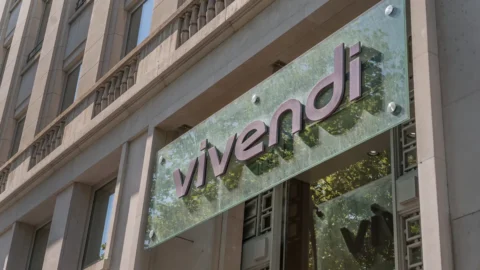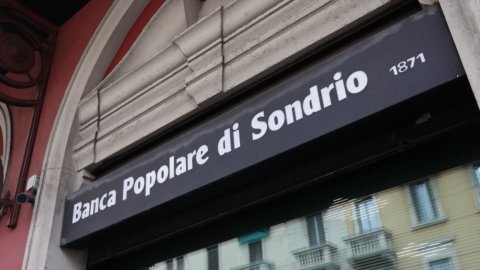The Board of Directors of Unicredit approved the Strategic Plan 2016-2019, Transform 2019, which will be presented to analysts and investors today during Capital Markets Day in London.
The plan provides an option capital increase of 13 billion, fully guaranteed by a consortium led by UniCredit Cib, Morgan Stanley and Ubs as structuring advisor. The pool also includes, as joint global coordinators, Bofa Merrill Lynch, Jp Morgan and Mediobanca, while Citigroup, Credit Suisse, Deutsche Bank, Goldman Sachs and HSBC are co-global coordinators and joint bookrunners. The meeting for the green light to the operation is convened on 12 January. The shareholders will also have to express their opinion on the proposal for the grouping of ordinary and savings shares in the ratio of one new share for every 10 held.
The business plan then provides another 6.500 net redundancies by 2019, for a total net reduction in FTEs (full-time employees, ed) of approximately 14.000 units by 2019. Savings in terms of personnel costs amount to 1,1 billion.
Furthermore, Unicredit aims at annual recurring savings net of 1,7 billion euros from 2019, a cost/income ratio of the group less than 52% since 2019, better profitability with Rote (return on tangible equity) of more than 9% from 2019 and a policy of distribution of cash dividends between 20% and 50%. At 2019 is also seen a cost of risk of the Group to 49 basis points, down 40 basis points compared to 2015.
As announced on 11 July 2016, the strategic review covered all the main areas of the Bank in order to "strengthen and optimize the Group's capital endowment, improve its profitability, ensure continuous evolution of business activities and maintain the necessary flexibility to seize all the opportunities to generate value”.
At the same time, the plan aims to "optimize capital, reduce costs, cross-sell between the different entities of the group and, above all, further improve discipline in risk management".
In detail, the objectives of the plan are as follows:
– Strengthen and optimize capital, to align with the capital ratios of the best G-SIFIs.
– Improve asset quality, with decisive measures to address Italy's legacy woes through proactive risk reduction, an increase in the gross non-performing loan (NPE) coverage ratio and even more stringent risk management policies , to further improve the quality of disbursement of new loans.
– Transform the operating model, increase customer focus, while simplifying and streamlining products and services to reduce cost of operations for customers.
– Maximize commercial bank value, leverage the potential of retail client relationships and go-to status for corporate clients in Western Europe, further strengthen leadership position in Central and Eastern Europe and improve cross-selling between business lines and countries.
– Adopt a streamlined Group Corporate Center, but with strong steering power and uniform KPIs across the Group, to direct and guide managerial behavior, ensure accountability, streamlined support functions and transparent cost allocation.
“We have developed a pragmatic plan based on prudent assumptions, with concrete and achievable objectives, based on risk and cost management levers that are firmly under our control – commented Jean Pierre Mustier, Chief Executive Officer of Unicredit – We are implementing measures decided to address the legacy issues of gross non-performing loans (NPE) with the aim of improving and sustaining future current profitability and becoming one of the most attractive banks in Europe”.
“We intend to capitalize on our current competitive advantages, such as our unique network spread across Western, Central and Eastern Europe, as well as capitalize on the benefits of our straightforward Commercial Banking model with a Corporate & Investment segment,” he concluded. Mustier.
As for the numbers, Unicredit aims at a strengthened capital position in line with the best G-SIFIs1:
– Capital increase under option for 13 billion euros, fully guaranteed in terms of amount subject to usual market conditions.
– Incisive initiatives already taken in the management of equity investments: Fineco, Pekao and Pioneer.
– In 2019 fully loaded CET1 above 12,5%.
De-risking activities with strengthening of coverage rates to overcome past legacies in terms of asset quality.
– €12,23 billion of extraordinary items estimated in 4Q 2016, including loan loss provisions of €8,14 billion and net restructuring costs of €1,7 billion.
– De-risking of 17,7 billion euros of gross bad loans through a securitized portfolio.
– Gross NPL coverage ratio above 54% in 2019-
Further strengthen risk management discipline with better quality future disbursements.
– Group cost of risk for 2019 at 49 bps, down 40 bps compared to 2015.
Cost efficiency measures and discipline to significantly reduce the cost/income ratio and transform the business model.
– Net annual recurring savings of €1,7 billion since 2019.
– Group cost/income ratio lower than 52% since 2019.
Improved profitability and new cash dividend distribution policy.
– RoTE above 9% from 2019.
– Cash dividend distribution policy between 20% and 50%.
Lean Corporate Center but with strong driving power to direct Group performance and ensure accountability through rigorous monitoring of KPIs6.
– Creation of a lean but strong Corporate Center that monitors the KPIs assigned to the divisions.




